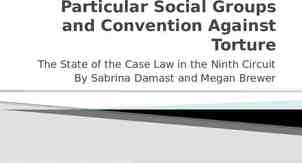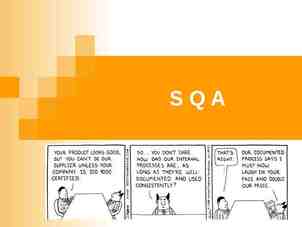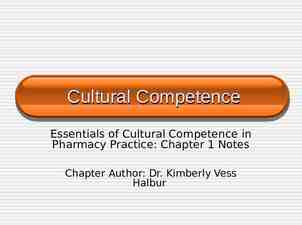Dangerous Waste Generator Training How do I properly manage
44 Slides9.84 MB

Dangerous Waste Generator Training How do I properly manage wastes generated in my work area?

What is a Dangerous Waste Characteristic waste – Corrosive – Flammable – Reactive

What is a Dangerous Waste – Toxicity (Washington State levels) Toxicity for solutions and mixtures State with most stringent waste requirements

What is a Dangerous Waste City of Pullman discharge limits – pH must be between 5-9 Rinsate – Collect or drain discharge

When is empty, really empty

What is a Dangerous Waste Examples – Paints, epoxies, dyes – Oils, cleaning wastes, batteries, light bulbs, electronics

Collection & Disposal Procedure Generator Responsibilities Waste minimization Buy chemicals in volumes that will be used Purchase environmentally safe chemicals if possible Microscale experiments when feasible

Collection & Disposal Procedure Generator Responsibilities Waste container – – – – Compatibility Correct lid Integrity Close when waste not being added Don’t completely fill Secondary containment if available Security

Collection & Disposal Procedure Generator Responsibilities Proper labeling – “Dangerous Waste” – Major hazard – Constituents No abbreviations Avoid trade names Equal 100%, including water Attach label to container when waste is first added EH&S will provide labels upon request

Collection & Disposal Procedure Generator Responsibilities Please for all that is holy and pure – Don’t combine mercury wastes with any other waste – Don’t combine biohazard or radioactive waste with chemical waste

Collection & Disposal Procedure Generator Responsibilities Fill out an online Chemical Collection Request (CCR) Form www.ehs.wsu.edu/ccr/ccr.asp – Name, location (building, room number, mailstop), phone number – Constituents (no abbreviations) equaling 100% including water – Container size and number of containers

Recent Compliance Inspections Violations Found – Labels not properly filled out – Not defacing product labels – No lids on waste containers – Having funnels in waste containers

Recent Compliance Inspections Violations Found – Housekeeping causing potential safety concerns – Improperly labeled waste containers

Collection & Disposal Procedure EH&S Responsibilities Properly dispose of waste EH&S services free of charge

Additional waste management information Biohazard waste Sharps Radioactive waste Glass waste Compost material Controlled substances

Chemical Storage

Segregation Common segregation mistakes – Organized alphabetical Solid oxidizers next to organic solids – Organic acids with oxidizing acids – Acids with bases – Air and water reactive – Using fume hood for routine storage

Segregation Separate incompatible materials by – Tubs – Different cabinets – Different shelves

Gas Cylinders Chain, racks to ensure safe storage Transport using wheeled carts with cylinders strapped in

Quantity Type of material, storage cabinets, and floor Common materials of concern – Flammable gases – Flammable liquids – Highly toxic materials – Reactives

Emergency Response

Fires and Other Emergencies When in doubt pull fire alarm and when safe to do so call 911 Close hood sash Store hazardous materials Close lab door (should be automatic fire doors) Evacuate to nearest exit, meet at designated location Use fire extinguishers only if trained

Hazardous Materials Spill For material releases that are small and low hazard within your work area, you may clean if: – It is in your work area – Completed in 15 minutes with normal PPE – Trained to work with spilled material and familiar with hazards

Hazardous Materials Spill For large releases or releases with greater toxicity and associated hazards please call 911, this will mobilize emergency response personnel to scene

Accidental Release

Hazardous Materials Spill Exception to rules – For mercury spills call EH&S at 5-3041 – Water leaks call 5-9000

Additional Programs Standard Operating Procedures (SOPs) Process Hazards Resource names and locations Recommended and required personal protective equipment Waste disposal procedures Designated areas for use Decontamination procedures (accidental releases) Storage and

Emergency Planning

Building Coordinator Program Each building has a liaison which serves as a primary communication and coordination point for Facilities Services, EH&S, Emergency Management, and Information Technology Service

WSU Alert Provides email, phone, and text messages regarding emergencies on the WSU campus.

Department of Homeland Security (DHS) Chemical of interest (COI) Lab personnel should register at www.ehs.wsu.edu Please notify EH&S if you add or remove COI from your laboratory or work area

Any Questions?


















